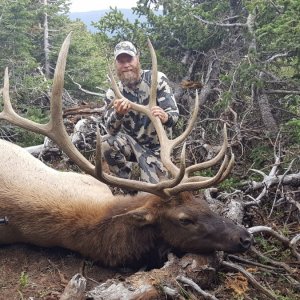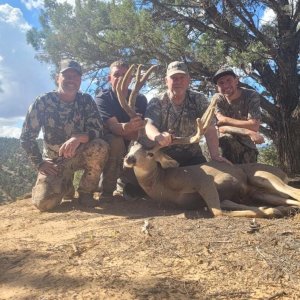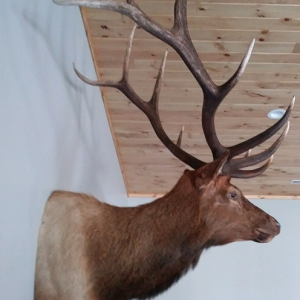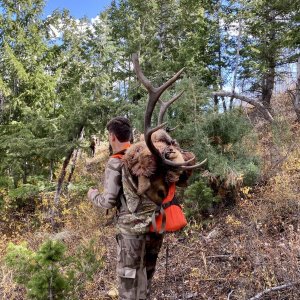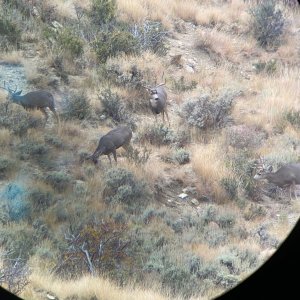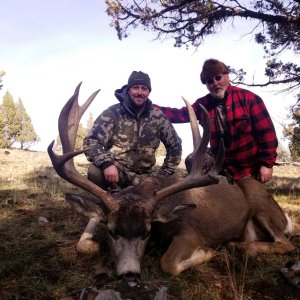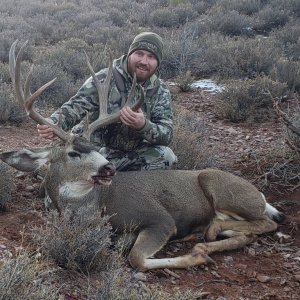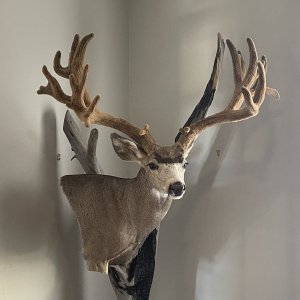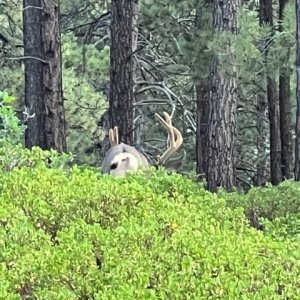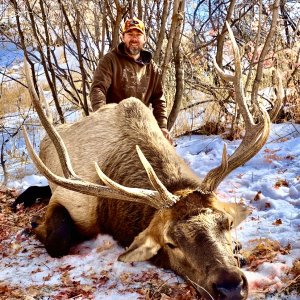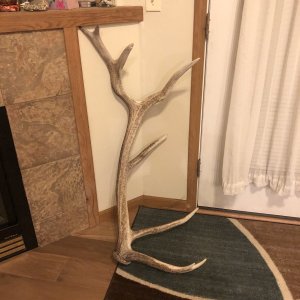cantkillathing
Very Active Member
- Messages
- 1,455
Who believes these numbers? I want to know if anyone believes the numbers on this. Is there anyone that believes it is even close.
How do we get better mule deer counts?
Box Elder , objective 20,000 - post 2010 estimated herd size 17,100
Cache , objective 25,000 - post 2010 estimated herd size 16,500
Ogden , objective 11,000 -post 2010 estimated herd size 9,150
Morgan, So. Rich , objective 12,000 -post 2010 estimated herd size 9,900
East Canyon , objective 7,000 -post 2010 estimated herd size 9,100
Chalk Creek , objective 10,500 -post 2010 estimated herd size 8,500
Kamas , objective 8,000 -post 2010 estimated herd size 5,950
North Slope, objective 6,200 -post 2010 estimated herd size 6,200
S. Slope, Yellowstone, objective 13,000 -post 2010 estimated herd size 10,000
S. Slope, Vernal/Diamond ,objective 13,000 -post 2010 estimated herd size 12,000
Book Cliffs ,objective 15,000 -post 2010 estimated herd size 7,000
Nine Mile , objective 8,500 -post 2010 estimated herd size 4,600
La Sal, objective 18,100 -post 2010 estimated herd size 6,600
San Juan , objective 20,500 -post 2010 estimated herd size 12,900
Henry Mountains ,objective 2,000 -post 2010 estimated herd size 1,200
Central Mtns., Manti , objective 38,000 -post 2010 estimated herd size 19,900
Central Mtns., Nebo , objective 22,600 -post 2010 estimated herd size 11,800
Wasatch Mtns, D Fork, Heber, Timp ,objective 20,600 -post 2010 estimated herd size 18,000
Wasatch Mtns, Currant Cr. ,objective 15,000 -post 2010 estimated herd size 10,000
Wasatch Mtns,Avintaquin ,objective 3,200 -post 2010 estimated herd size 1,700
Wasatch Mtns, Salt Lake ,objective 2,000 -post 2010 estimated herd size 1,800
Oquirrh/Stansbury ,objective 10,600 -post 2010 estimated herd size 8,700
West Desert , objective 11,200 -post 2010 estimated herd size 8,800
Southwest Desert ,objective 3,200 -post 2010 estimated herd size 1,400
Fillmore , objective 12,000 -post 2010 estimated herd size 9,000
Beaver ,objective 11,000 -post 2010 estimated herd size 10,900
Monroe ,objective 7,500 -post 2010 estimated herd size 4,800
Mt. Dutton objective 2,700 -post 2010 estimated herd size 1,800
Plateau ,objective 25,000 -post 2010 estimated herd size 12,500
Kaiparowits ,objective 1,000 -post 2010 estimated herd size 400
Paunsaugunt ,objective 5,200 -post 2010 estimated herd size 4,900
Panguitch Lake ,objective 8,500 -post 2010 estimated herd size 8,100
Zion ,objective 9,000 -post 2010 estimated herd size 9,900
Pine Valley , objective 12,800 -post 2010 estimated herd size 12,600
STATEWIDE TOTALS ,objective 411,900 , post 2010 estimated herd size 293,700
How do we get better mule deer counts?
Box Elder , objective 20,000 - post 2010 estimated herd size 17,100
Cache , objective 25,000 - post 2010 estimated herd size 16,500
Ogden , objective 11,000 -post 2010 estimated herd size 9,150
Morgan, So. Rich , objective 12,000 -post 2010 estimated herd size 9,900
East Canyon , objective 7,000 -post 2010 estimated herd size 9,100
Chalk Creek , objective 10,500 -post 2010 estimated herd size 8,500
Kamas , objective 8,000 -post 2010 estimated herd size 5,950
North Slope, objective 6,200 -post 2010 estimated herd size 6,200
S. Slope, Yellowstone, objective 13,000 -post 2010 estimated herd size 10,000
S. Slope, Vernal/Diamond ,objective 13,000 -post 2010 estimated herd size 12,000
Book Cliffs ,objective 15,000 -post 2010 estimated herd size 7,000
Nine Mile , objective 8,500 -post 2010 estimated herd size 4,600
La Sal, objective 18,100 -post 2010 estimated herd size 6,600
San Juan , objective 20,500 -post 2010 estimated herd size 12,900
Henry Mountains ,objective 2,000 -post 2010 estimated herd size 1,200
Central Mtns., Manti , objective 38,000 -post 2010 estimated herd size 19,900
Central Mtns., Nebo , objective 22,600 -post 2010 estimated herd size 11,800
Wasatch Mtns, D Fork, Heber, Timp ,objective 20,600 -post 2010 estimated herd size 18,000
Wasatch Mtns, Currant Cr. ,objective 15,000 -post 2010 estimated herd size 10,000
Wasatch Mtns,Avintaquin ,objective 3,200 -post 2010 estimated herd size 1,700
Wasatch Mtns, Salt Lake ,objective 2,000 -post 2010 estimated herd size 1,800
Oquirrh/Stansbury ,objective 10,600 -post 2010 estimated herd size 8,700
West Desert , objective 11,200 -post 2010 estimated herd size 8,800
Southwest Desert ,objective 3,200 -post 2010 estimated herd size 1,400
Fillmore , objective 12,000 -post 2010 estimated herd size 9,000
Beaver ,objective 11,000 -post 2010 estimated herd size 10,900
Monroe ,objective 7,500 -post 2010 estimated herd size 4,800
Mt. Dutton objective 2,700 -post 2010 estimated herd size 1,800
Plateau ,objective 25,000 -post 2010 estimated herd size 12,500
Kaiparowits ,objective 1,000 -post 2010 estimated herd size 400
Paunsaugunt ,objective 5,200 -post 2010 estimated herd size 4,900
Panguitch Lake ,objective 8,500 -post 2010 estimated herd size 8,100
Zion ,objective 9,000 -post 2010 estimated herd size 9,900
Pine Valley , objective 12,800 -post 2010 estimated herd size 12,600
STATEWIDE TOTALS ,objective 411,900 , post 2010 estimated herd size 293,700


